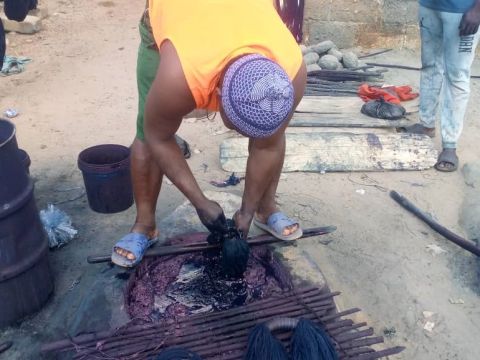Indigo Textile Dyeing in Daboya, Ghana
The Indigo Dyeing Tradition in Daboya: Notes from the Field
Daboya is a semi-urban community in the Savanna Region of Ghana. It is well noted for its organic indigo textile dyeing and weaving tradition which dates back to over three centuries. Before the introduction of synthetic dyes, Indigo was the foundation of most textile traditions in West Africa. In Ghana, most of the traditional smock dresses and related fabrics that are worn are produced in Daboya. Below, I present an account of the indigo dyeing process as observed in Daboya in May 2022.
1. Women and children harvest indigo leaves known as Gara from the wild.
2. The Gara is pounded by the women, moulded into small balls and dried to prevent loss of the colour from the leaves.
2. The dried Gara balls are sold to indigo organic dyers in the Daboya township
4. The dyeing pit is cleared and filled with water for the preparation of the dyeing concoction.
5. A special clay body known as Zata which has been recycled for over 300 years is added to the dyeing pit. It must be noted that the Zata is used as one of the major materials for dyeing and knowledge about it is jealously guarded by the Agarawura and his Agaraasiba Bolumu group who are the indigo knowledge holders of Daboya.
6. The Gara is added to the pit and mixed with the Zata with a wooden stick.
7. The concoction is monitored for about 3 days for the Gara to ferment and the Zata to settle.
8. The concoction is now ready to be used. The dyer stretches the yarn and creates the dyeing patterns desired by tiring rubber bands on portions of the stretched yarn.
9. The prepared yarn is gently immersed into the dyeing pit with the concoction. The yarn is turned back and forth in a systematic fashion for at least 30 minutes.
10. The yarn is then pulled out, squeezed by two people in a rotational form and dried for about 1 hour
11. The yarn is placed back into the pit for another round of dyeing.
12. Steps 10 and 11 are repeated until the desired colour is achieved.
13. The yarn is dried and prepared for weaving.
Daboya
Ghana
